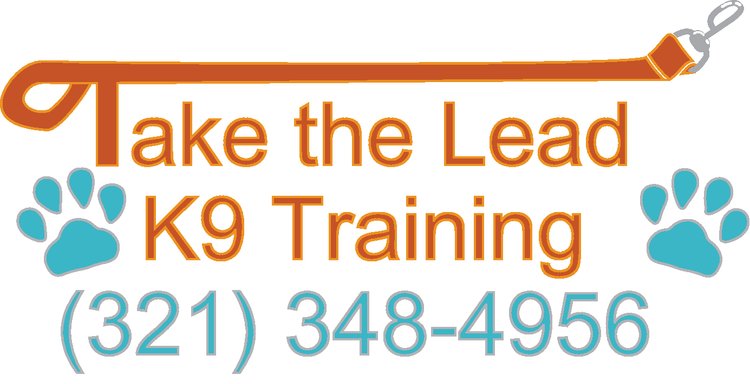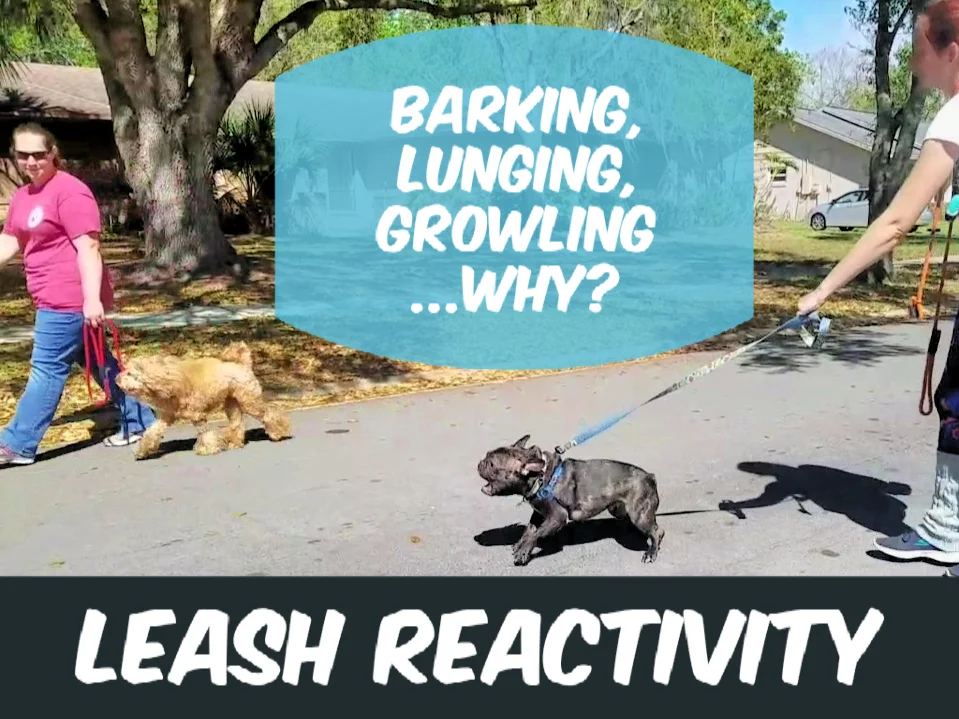What is Leash Reactivity (Leash Aggression) and why does my dog have it?
Leash reactivity is a behavior that many dogs owners struggle with. If you're not familiar with what the term means - think about that dog you see barking and lunging at the end of their leash whenever they see a dog, person, bicycle, etc. You might refer to it as “leash aggression.” Leash reactivity is extremely frustrating, embarrassing, and scary for dog owners who often struggle to keep their dog under control in public.
Leash reactivity can be broken down into basically three categories:
Fear Based Reactivity
Excitement Frustration Reactivity
Predatory Aggressive Reactivity
The most common form of leash reactivity is actually the first one - Fear Based Reactivity. You see, even though it sounds very aggressive- like your dog wants to eat up the other dog on a walk - most leash reactivity is actually a big display based on fear and the desire to AVOID conflict. When your dog barks and lunges, they are using their body and voice to create and expand a "safety bubble" around themselves to keep the "target" away from themselves. It's funny, but many leash reactive dogs can actually be social or less explosive in off-leash situations if they can create a comfortable amount of space from the target. Many leash reactive dogs actually play great with others!
The reality is that leashes actually exacerbate leash reactivity, because they keep the dog from being able to move naturally in response to a trigger. In the case of fear based reactivity, it may have developed slowly over time, but bad experiences during on leash greetings with other dogs or people contribute to a dog's leash reactivity.
Have you ever seen two dogs sniffing on a walk, and it's ok for a few seconds and the suddenly someone gets snarky? That's the early makings of leash reactivity! In an off leash setting, the snarky dog could have just walked away from the other dog, but since everyone is tethered on leads - to their owner, no doubt (which can add in an element of possessiveness) - the dog has no option than to get explosive to create space because he is uncomfortable.
If that happens enough, snarky dog will start to think "almost every time I meet a dog on leash I will feel uncomfortable. I think exploding proactively will help me feel more comfortable" and .... leash reactivity develops.
If your dog isn’t consistently snarky during on leash greetings, sometimes people play the gamble of “maybe he will like this dog.” That means that some personalities make your dog more uncomfortable than others. Unfortunately, if your dog gives attitude to a dog that “can't take a correction without conflict," a dogfight can ensue. You can bet your dog will be leash reactive after that incident.
If the other dog, (not snarky dog but the other), is very sensitive and has low confidence, it may feel too much pressure from the snarky dog’s correction and become afraid. All of a sudden, your sensitive dog may start to become reactive on walks. On the flip side, if the other dog isn't snarky, but is actually overwhelmingly pushy and “loves other dogs too much” (think over excited friendly dog), your sensitive dog is going to feel too much social pressure (as well as physically pressure from having paws on them or being barrel rolled to play), and can develop reactivity in an effort to keep dogs away.
If at any point an off leash dog attacks or over pressures your on leash dog, it's very common for leash reactivity to develop. It's also extremely common for leash reactivity to be worse with their owners who walk them (as opposed to a trainer or someone who doesn’t have a relationship with your dog), because unfortunately, the owners has been at the scene of the reactivity in the past, and there are associations of feeling unsafe around other dogs with that person - even if we meant well and just wanted them to make friends.
(Leash reactivity doesn't just happen from having a bad experience on a walk - it can also develop from bad social experiences at doggie daycare or dog parks. If your dog is jumped in an aggressive way, it's very likely for it to develop into reactivtiy - but remember it's not just aggression that makes dogs uncomfortable! Overly playful pushy dogs who are smothering your pup will also can make them uncomfortable and cause distrust in other dogs).
It comes down to the fact that social experiences on leash OR off leash with inappropriate social partners, limit our dog's abiltiy to express their discomfort. Too often, their natural social cues of asking for space (diverted eye contact, stiff body language, trying to walk away) are ignored and our dog learns quickly that the only way to guarantee space is to make a big scene. And, for the most part it works! When we have reactive dogs we stop getting them close to others and try to avoid triggers as much as we can - and they learn that their explosiveness was loud enough for us to understand they were uncomfortable.
So what is the solution? First - just say NO to on leash greetings! So many dog's have their social skills trashed by on leash greetings and/or bad experiences at doggie daycare or dog parks.
Next, make sure the dogs you let your dog around are good influences and social matches. Many leash reactive dogs need to spend time around calm and respectful dogs in social settings, often under the guidance of a professional, so that they can rebuild their lost social skills and work on their "awkward" ways of interacting.
Find training tools and approaches that allow you to communicate with your dog clearly, have best control, advocate for them while also fairly challenging them to work on their issues!
‐---‐-------
Excitement Frustration Reactivity has many similar solutions to fear based reactivity, but it is rooted from a different place. It is based out of frustration of NOT being able to get close to the trigger, where before we were discussing why dogs do it to make space!
This excitement frustration typically comes from dogs who are over stimulated and highly aroused when they see other dogs or people and want to "go say hi!" Unfortunately, when we actually let them approach and interact with their target, we are reinforcing that explosive behavior because it works - it gets them to what they want! So, like with fear based reactivity, say NO to on leash greetings - particularly with other dogs. You may get to a point in training that they can calmly greet people, but greeting other dogs on leash is often severely reinforcing outward environmental excitement and is going to continue to make your dog confused on how you want them to behave on leash. Not to forget, your over excited dog will often be one of those "rude greeters" and will likely cause another dog to take a step towards reactivity- or even worse - your dog's abrasive excited energy is not well received at all and your dog is seriously corrected or attacked on leash...and now your excitement reactivity will change to fear based reactivity 😨
So, like mentioned before: avoid on leash greetings and find training tools and approaches that allow you to correct over excitement and help keep your dog focused on YOU!
---------------
Predatory Aggressive Reactivity is the last "type" of reactivity, and is really the less common.
While many folks think their reactive dog is out for blood - true aggression is much more rare. True aggression is very predatory in nature, and is quiet...just think, the lioness or cheetah doesn't roar or make a bunch of noise when hunting...that gives you away to your prey!
On a walk predatory aggression is quiet until the dog hits the end of the leash, then they will likely blow up in a frustrated way. Typically, the real predatory reactivity you see on walks is more bird/squirrel/cat related than true dog to dog aggression. Not to say you should mingle your dog off leash "to see" without the help of a professional, but inherently most dogs want to avoid conflict.
How do you address predatory leash reactivity? The same way :) NO on leash greetings and having excellent tools and approaches of control that give you the ability to redirect your dog and aide in controlling arousal! Be careful about encouraging chasing wildlife while on a leash, because again - it reinforces that they can be explosive and impulsive when tethered to you - instead of the leash being a symbol of "working" together and off leash meaning "do your thing." Try not to be inconsistent in how you expect your dog to behave on their leash!
Learning how to navigate the world with a reactive dog can be challenging, but with the right tools and approaches you can learn how to advocate better for your dog to regain their trust in your ability to control the situation- or in the case of the frustrated pups, show them that you are in charge of what they get to do (or in this case chase or charge - or lack there of!!) on a walk!

